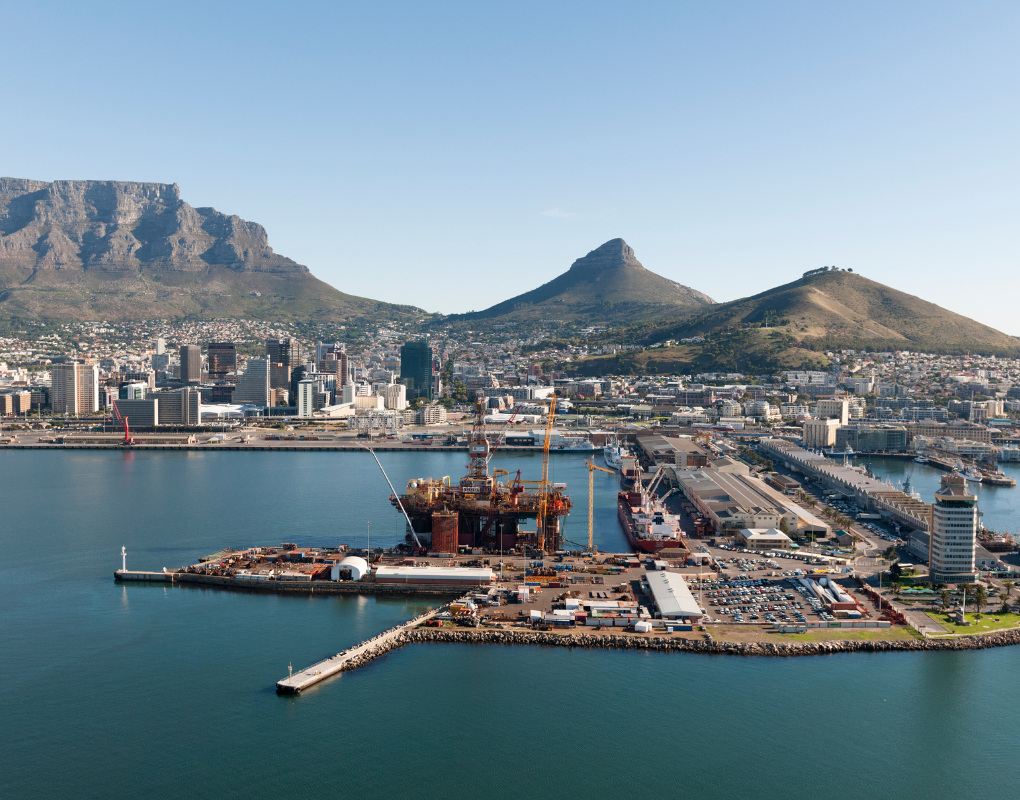Big, Exciting Changes Coming To Cape Town Harbour!

Big, Exciting Changes Coming To Cape Town Harbour!
South Africa’s ports have long been the backbone of the country’s trade economy. But over the years, bottlenecks, equipment backlogs, and ageing infrastructure have made headlines for the wrong reasons. Now, that tide is turning.
A multi-billion rand investment is finally flowing into the Port of Cape Town, with ambitious plans on the table to improve capacity, cut delays, and support local industries, especially agriculture. Here’s what’s on the horizon, and why it matters for businesses operating in and around the harbour.
Why Port Efficiency Is Absolutely Critical
South Africa’s ports are more than just entry and exit points for goods. They are essential to feeding, fuelling, and powering not just our economy, but also those of our landlocked neighbours like Zimbabwe, Botswana, Zambia, and the DRC.
Cape Town, in particular, plays a crucial role in moving fresh produce, wine, and fish from the Western Cape to markets around the world. With agricultural exports growing fast, the pressure is on to get produce out on time and in good condition. That’s where these upgrades come in, and where service providers behind the scenes are gearing up to support smooth sailing.
LEARN MORE: How Tariffs And Port Tensions Affect Ship Supply In Africa
What Upgrades Will Be Made?
Transnet is overseeing a R4.3 billion (USD 230 million) upgrade at the Port of Cape Town, and it’s big news for the city’s logistics landscape. The project includes:
- Expanding terminal capacity from 1 million to 1.4 million TEUs (twenty-foot equivalent units)
- 30 hectares of development on currently unused land for warehousing and support services
- New equipment, including 28 rubber-tyred gantry cranes (RTGs) and 7 ship-to-shore cranes
- Agri export enhancements, including additional reefer (refrigerated container) capacity
This investment aims to align the terminal’s container handling capabilities with its berthing capacity, which already stands at 1.4 million TEUs.
Tackling the Wind Problem
One of Cape Town Container Terminal’s biggest challenges has nothing to do with what’s happening on the ground; it’s what’s blowing in from above. Strong winds account for over 1,200 hours of lost productivity every year. To tackle this, Transnet plans to introduce:
- 20 hydraulic shore-tension units to stabilise vessels during high swells and wind
- A helicopter piloting service to guide vessels during adverse weather
- A CSIR-led predictive wind modelling programme to better plan around wind events
From a chandling perspective, these measures are significant. Time lost to weather can impact everything from bunkering and provisioning to technical supplies and cargo handling. The less downtime, the better the flow of goods, both on and off the vessel.
READ NEXT: The Arrival Of Mega Container Ships At African Ports & Why It Matters
Collaboration With The Private Sector
Transnet has made it clear that this isn’t a solo mission. The state-owned logistics giant is calling on private sector players to get involved. Whether it’s investing in backup generators to support cold storage or helping develop back-of-port infrastructure like truck staging areas, collaboration is key.
Work is already underway with the City of Cape Town and the Western Cape Government to improve how goods move beyond the port gates. From better road linkages to rail re-alignments, these changes could ease congestion, reduce carbon emissions, and improve turnaround times, something exporters and suppliers alike will welcome.
The Exciting Agri Angle
With agriculture driving Cape Town’s export growth, the port’s future is increasingly tied to crops like citrus, grapes, deciduous fruits, and grains. That’s why the Cape Town Multi-Purpose Terminal is being repositioned as an agricultural hub. It’s expected to handle everything from barley and wheat to rice and citrus, with improved cold-chain facilities helping keep perishable goods in top shape.
For chandlers supporting vessels in agricultural export, this creates a fresh opportunity. Reefer vessels need reliable, high-turnaround provisioning and on-board support, and suppliers who understand their fast-moving timelines and compliance requirements.
ALSO SEE: Ship Chandling Services South Africa: Rail On Track & Ports Powering Up
Saldanha Iron Ore Terminal (A Quiet Powerhouse!)
While most of the spotlight is on Cape Town, it’s worth noting that Saldanha Bay, just a few hours north, continues to break records. The Iron Ore Terminal there remains the largest of its kind on the continent. In fact, over 1.4 billion tons of iron ore have been exported through it to date. Recent records include:
- 5.7 million tons offloaded in a single month
- 246 776 tons exported in 24 hours
- 11,749 tons per hour loaded onto a single vessel
From fuel to filters and deck supplies, high-volume export terminals like Saldanha rely on seamless chandling support to stay operational 24/7. At Link Ship Chandlers, we take great pride in seeing how our support helps locations like these to thrive and contribute to economic growth in the region.
What This Means For Forward-Thinking Port Partners
At Link Ship Chandlers, we have a front-row seat to these changes across the country’s most active ports, including Cape Town, Saldanha, Gqeberha, Coega, Durban, Richards Bay, and East London.
As upgrades take shape and new efficiencies come online, our role behind the scenes remains simple: make sure vessels can stay compliant, stocked, and ready to operate, no matter how the harbour changes. From high-speed turnarounds to offshore supply runs, we understand the rhythm of port life. And with the pace of development picking up, that rhythm is only getting faster.
Ports may not always make front-page news, but they play a starring role in keeping South Africa trading, exporting, and growing. The work underway at Cape Town Harbour, and beyond, signals a new chapter. One that’s long overdue, but packed with promise. As the cranes rise and the ships keep sailing, the future of maritime logistics in the Western Cape looks more anchored than ever.












Leave a Reply